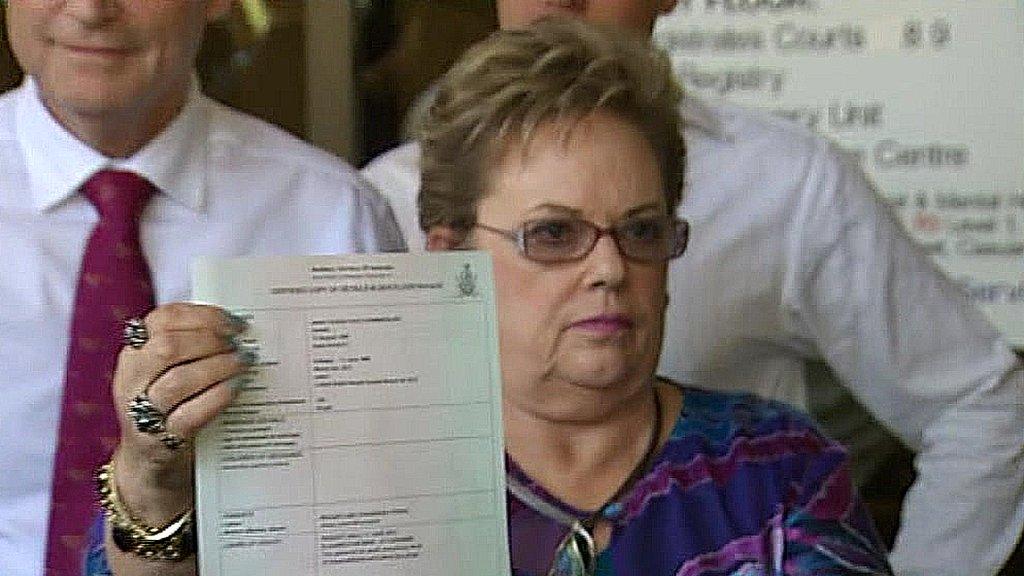Michael Chamberlain: Father of baby killed by dingo dies
- Published
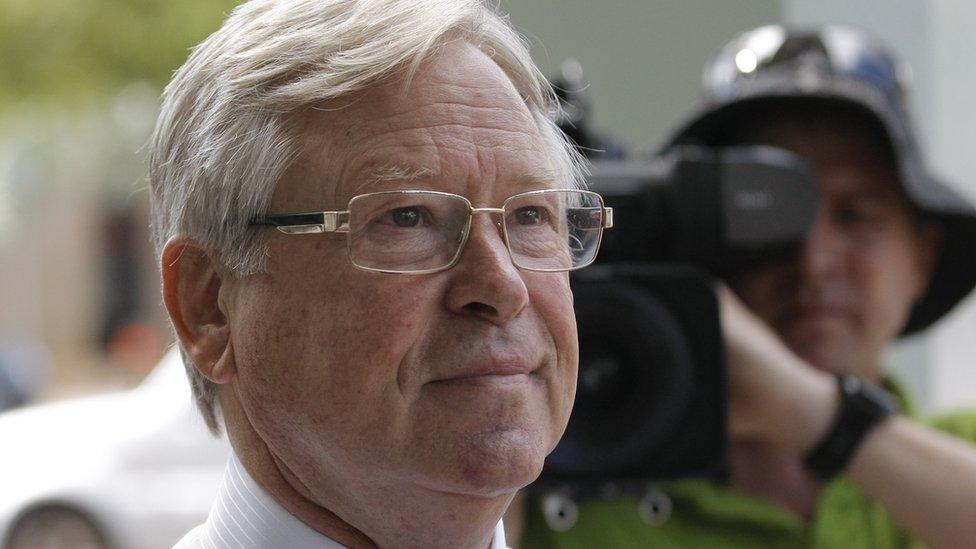
Michael Chamberlain was wrongly convicted in the death of his baby daughter, Azaria, in 1980
Michael Chamberlain, who fought for years to clear his family's name after his baby daughter Azaria was killed by a dingo, has died at the age of 72.
He died in Gosford hospital on Monday after complications from leukaemia.
The case of Mr Chamberlain and his wife, Lindy, attracted huge attention in Australia.
Prosecutors believed that the couple had killed their daughter. It was years before they were exonerated and the cause of death formally established.
At a trial in 1982, Lindy was found guilty of murdering Azaria and sentenced to life in jail. Michael was convicted as an accessory after the fact - until a chance discovery in 1986 overturned both verdicts.
Speaking in 2012, when the Northern Territory coroner finally ruled that Azaria had been taken by a dingo, Mr Chamberlain said that the battle to get to the legal truth had taken too long.
"However, I am here to tell you that you can get justice even when you think that all is lost," he said.
Actor Sam Neill, who portrayed Michael in the film A Cry in the Dark, said: "Throughout their cruel ordeal and the years of injustice, Michael Chamberlain maintained that quiet unassuming dignity - an impressive man. Rest in peace."
What happened to Azaria Chamberlain?
On 17 August 1980, the Chamberlain family were on a camping trip to Uluru, then called Ayer's Rock, when baby Azaria was taken from their tent by a dingo.
Lindy reportedly cried out: "my God, my God, the dingo's got my baby!" but a frantic search by the camping group and local guides discovered nothing. Azaria's body was never found.
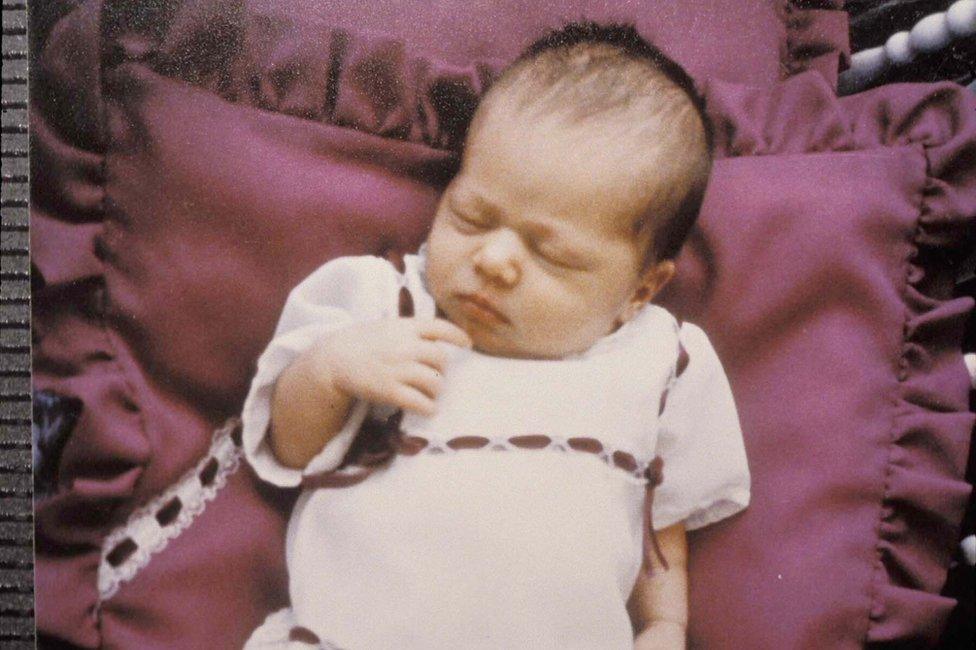
Azaria Chamberlain was only nine weeks old when she disappeared
In the aftermath, an inquest accepted Lindy and Michael's version of events, but law enforcement officials decided they did not.
At the time, dingoes were not generally seen as dangerous, and the Chamberlains' story was not widely believed.
A second inquest a year later led to allegations that the baby's throat had been cut and her body disposed of later. Chemical evidence of infant blood in the family car - which would later be widely discredited - was a key part of the prosecution.
Lindy was charged with murder and sentenced to life in prison.
Michael was charged with being an accessory after the fact and received an 18-month suspended sentence.
How did Lindy and Michael prove their innocence?
Lindy said her baby had been wearing a jacket, but there was no evidence of one among the baby's other clothes, found near the campsite.
She was still in prison in early 1986, having exhausted her legal options all the way to a High Court appeal, when a chance discovery revealed new evidence to support her story.
David Brett, an English backpacker, fell to his death while attempting to climb Uluru. The team searching for Mr Brett found a baby's jacket - matching exactly the brand and description Lindy gave in her testimony - in an area littered with dingo dens.
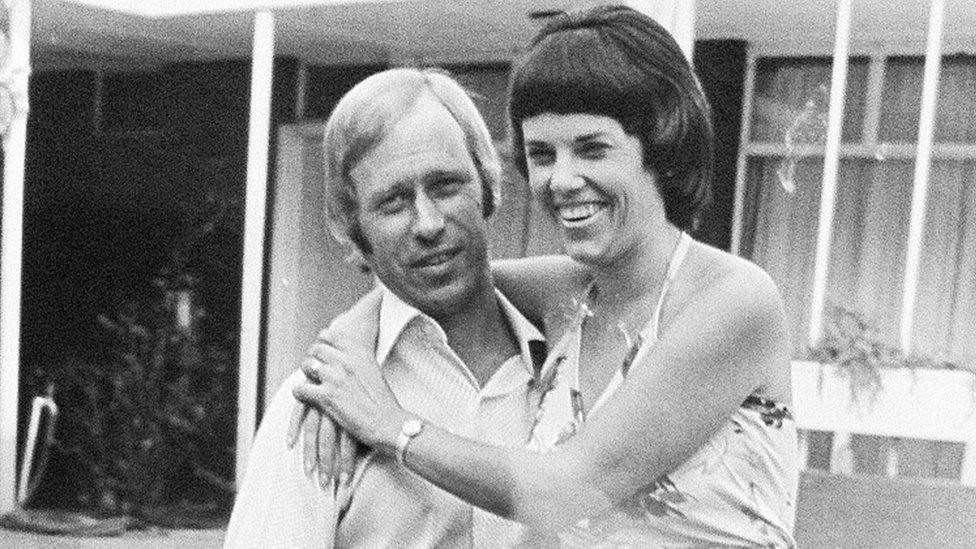
Michael, pictured with his former wife Lindy, were at the centre of Australia's famous "dingo" case
The revelation prompted authorities to order a fresh investigation and to release Lindy from prison.
It would be another two years before the pair were fully cleared, following a royal commission investigation.
Why did the case capture the world's imagination?
Lindy and Michael's story split the nation, and the court case was covered in sensational fashion by the media.
Their religion, as Seventh-Day Adventists, was not widely understood, leading to suspicion and even accusations of cult-like activity. It was one of the biggest legal and media events of the 1980s.
After the miscarriage of justice emerged, the case became a prime example of media influence in court cases.
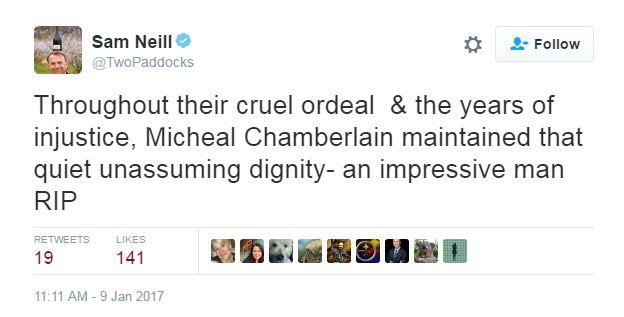
The injustice of the Chamberlain case brought the family many admirers
Outside Australia, the story would find worldwide fame when turned into a film, A Cry in the Dark, starring Meryl Streep as Lindy and Sam Neill as Michael.
A 32-year battle
Despite Lindy's release, the official cause of death remained the subject of debate for decades. Many people in Australia still believed there was more to the case.
Lindy and Michael divorced a few years after they were exonerated in the late 1980s, and Lindy began a campaign to have dingoes acknowledged as dangerous to humans.
Lindy Chamberlain-Creighton: ''We are relieved and delighted''
In 2012, 32 years after Azaria's death, a coroner issued the final report in the case, formally stating that Azaria was attacked and taken by a dingo, as her parents had always maintained.
Speaking after the verdict, Michael Chamberlain said "the truth is out" - and it was time for "some healing and a chance to put our daughter's spirit to rest".
Related topics
- Published12 June 2012
